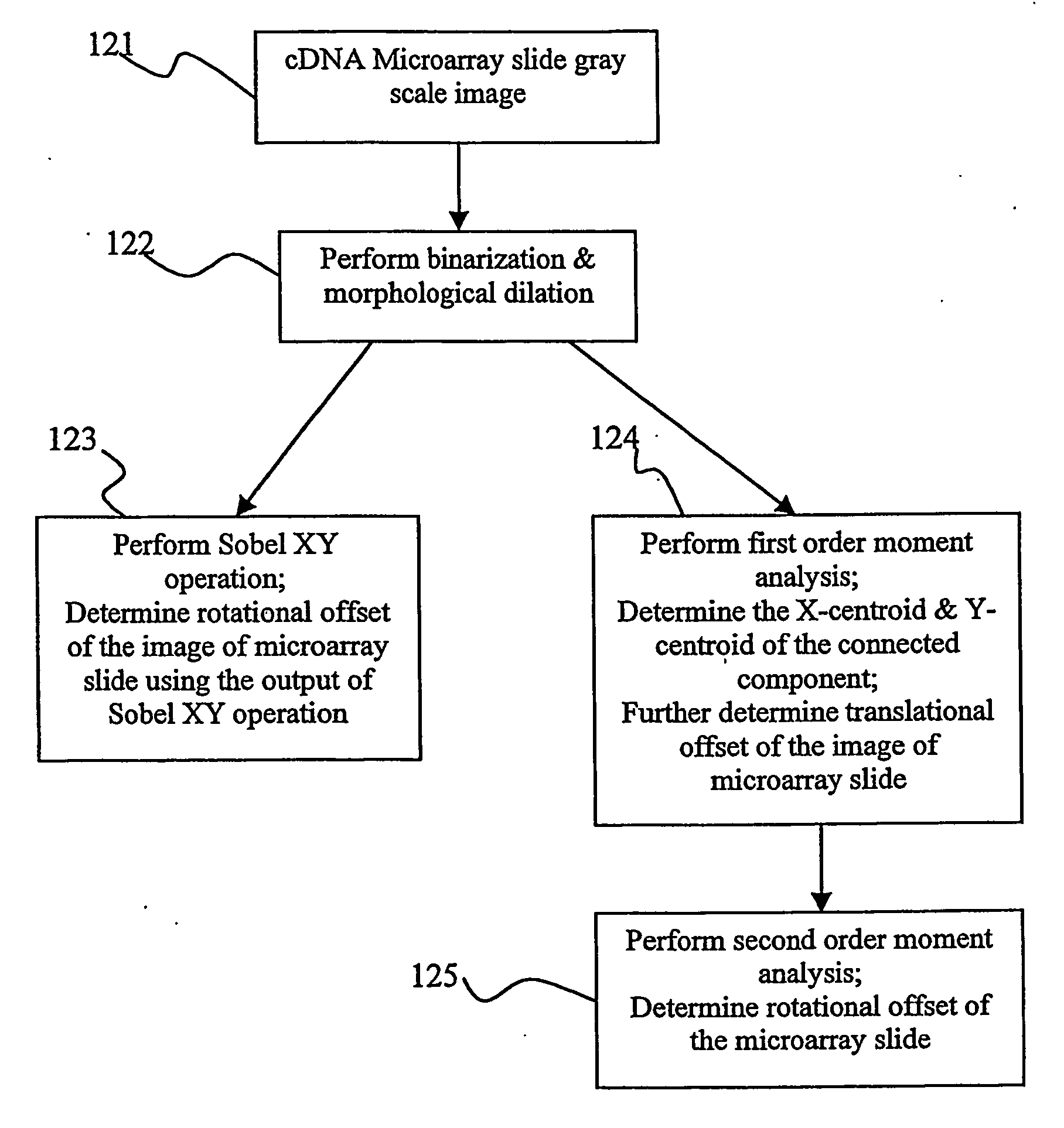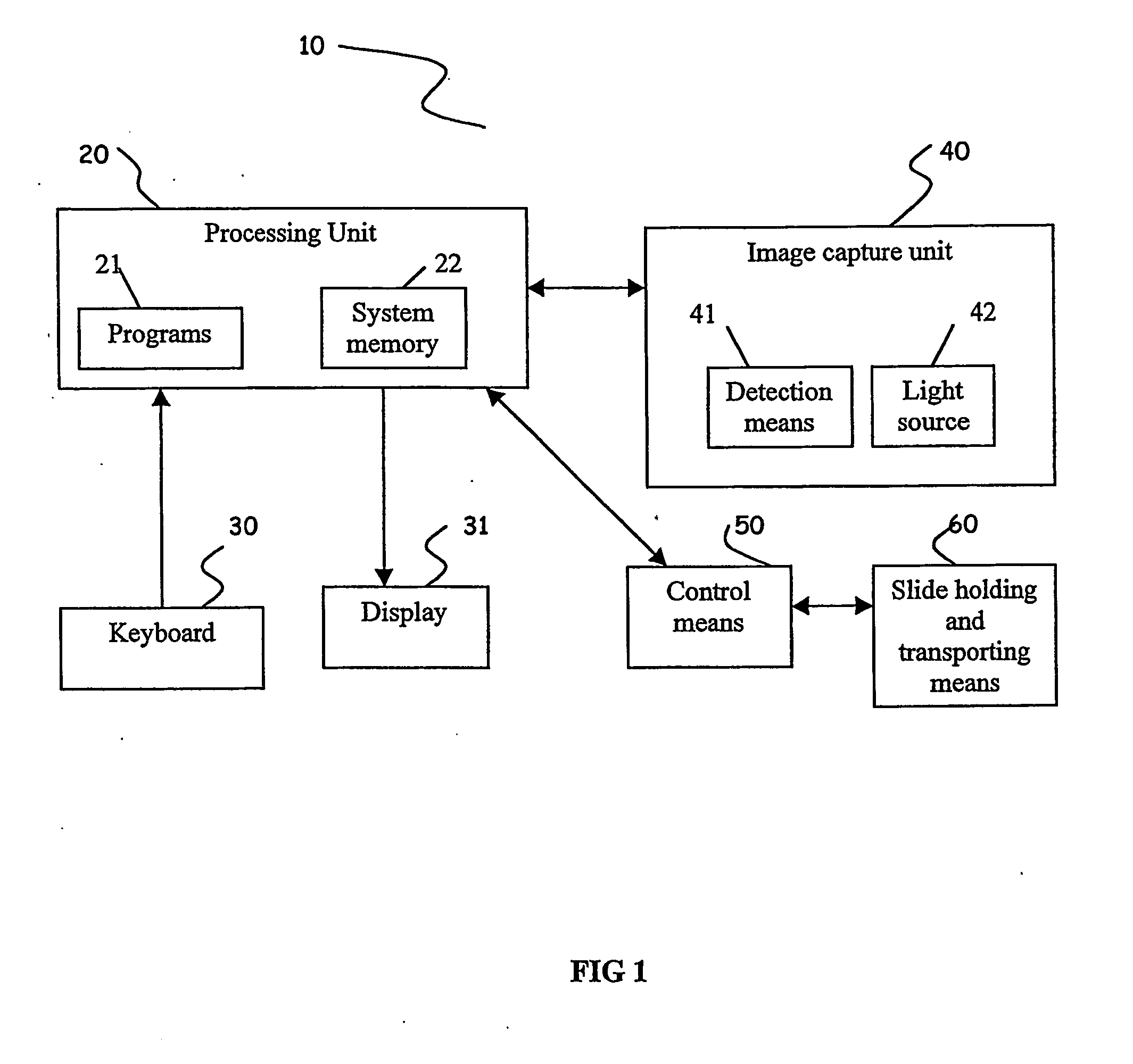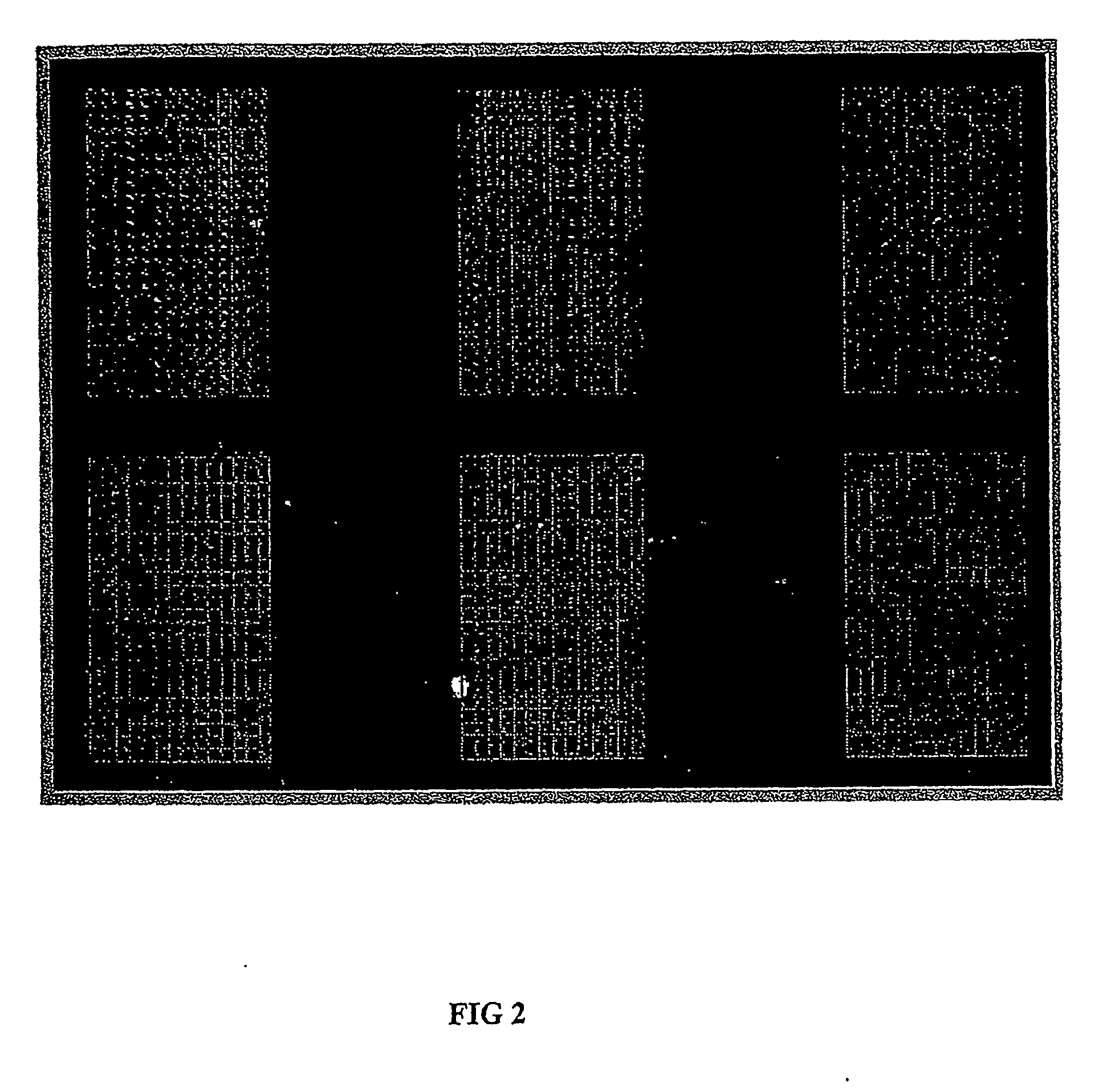Method and system for automatic vision inspection and classification of microarray slides
a microarray and automatic vision technology, applied in image enhancement, instruments, image data processing, etc., can solve the problems of affecting the interpretation of array images, the task of translating images, and the difficulty of table linking intensity values to each gene, so as to achieve low cost
- Summary
- Abstract
- Description
- Claims
- Application Information
AI Technical Summary
Benefits of technology
Problems solved by technology
Method used
Image
Examples
Embodiment Construction
[0027] Unless defined otherwise, all technical and scientific terms used herein have the same meaning as commonly understood by one of ordinary skill in the art to which this invention belongs.
[0028] Throughout this application, where publications are referenced, the disclosures of these publications are hereby incorporated by reference, in their entireties, into this application in order to more fully describe the state of art to which this invention pertains.
[0029] Referring to FIG. 1, an image-based vision inspection and classification system 10 includes a processing unit 20, a keyboard 30, a display 31, an image capture unit 40, a control means 50, and a slide holding and transporting means 60. The processing unit 20 is electrically connected to the keyboard 30, the display 31, the image capture unit 40, and the control means 50 via separate bus lines. The processing unit 20 includes application programs 21 that are used to execute the vision inspection and classification, and...
PUM
 Login to View More
Login to View More Abstract
Description
Claims
Application Information
 Login to View More
Login to View More - R&D
- Intellectual Property
- Life Sciences
- Materials
- Tech Scout
- Unparalleled Data Quality
- Higher Quality Content
- 60% Fewer Hallucinations
Browse by: Latest US Patents, China's latest patents, Technical Efficacy Thesaurus, Application Domain, Technology Topic, Popular Technical Reports.
© 2025 PatSnap. All rights reserved.Legal|Privacy policy|Modern Slavery Act Transparency Statement|Sitemap|About US| Contact US: help@patsnap.com



